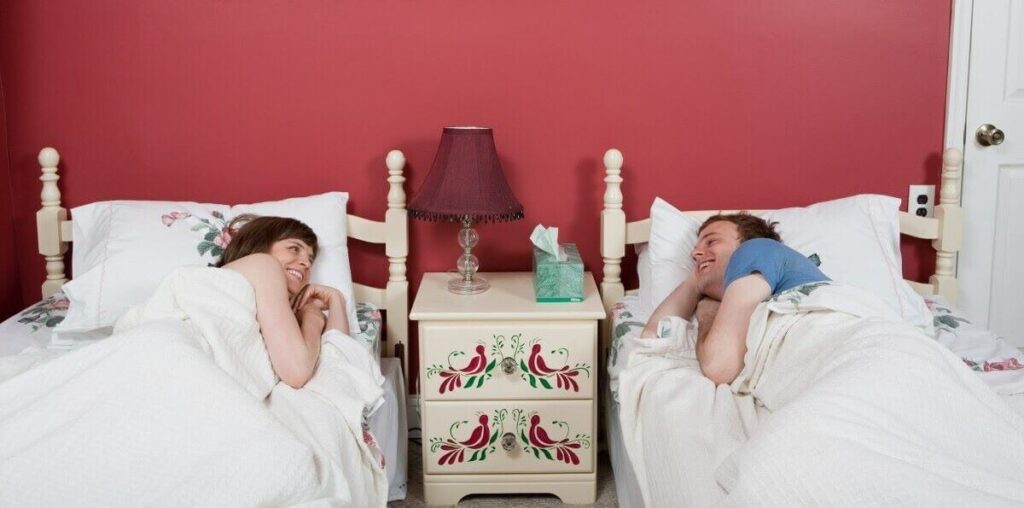Advertisement
Advertisement
Why did married couples sleep in separate beds back in the day? It’s a practice that might baffle us today, where shared beds symbolize intimacy and unity in a relationship. Yet, this once commonplace arrangement highlights the complex evolution of marital dynamics and societal norms through history.
Modesty and Social Norms
Initially, the separation of sleeping quarters stemmed from a deep-rooted sense of modesty and strict social norms. During the 18th and 19th centuries, society maintained conservative perspectives on physical intimacy, treating it as a highly private affair. A shared bed was deemed inappropriate, too revealing for the times. To preserve their social standing and modesty, couples often opted for separate beds.

Health and Hygiene Concerns
Historical health and hygiene issues also influenced this practice. In times when personal hygiene and clean linens were not as accessible as today, fears of disease spread and parasites were genuine. Couples sleeping apart was considered a preventive measure to combat health risks and foster better well-being.
Social Status and Space
For the affluent, separate sleeping arrangements were a mark of wealth and social status. Wealthy families, with their spacious homes and multiple bedrooms, showcased their prosperity through individual sleeping quarters. This separation was not only a symbol of luxury but also offered personal space, avoiding the discomfort of sharing a bed.
Practical Reasons
Practicality also played a role. Differences in sleep patterns, such as snoring or restlessness, could disrupt a night’s rest. Separate beds or bedrooms allowed for undisturbed sleep, contributing positively to each individual’s health and happiness.
Victorian Morality
In the Victorian era, characterized by stringent moral codes, the concept of separate sleeping spaces was even more pronounced. The era’s middle and upper classes advocated for “separate spheres” for men and women—men handling external affairs and women the domestic front. This division at night mirrored these gender roles, reinforcing distinct societal expectations.
Changing Social Norms
As the 20th century progressed, societal attitudes shifted. The women’s liberation movement and evolving views on intimacy saw the decline of separate sleeping arrangements. This cultural shift towards prioritizing emotional connection and companionship in marriages marked a significant departure from previous norms and expectations.
So next time you dive into your shared bed, remember the rich history of why this wasn’t always the norm. Share your thoughts and experiences on this topic below, and let’s keep the conversation going. Like, share, or comment if you found this insight surprising!
Advertisement
Related Articles
Tattooed Dad Goes Through Dramatic Change for Young Daughter’s Sake
Read more
Mom demands babysitter pay for ’emotional damage’ after kids eat chicken nuggets
Read more
You may also like
Advertisement
About Peter Cover


